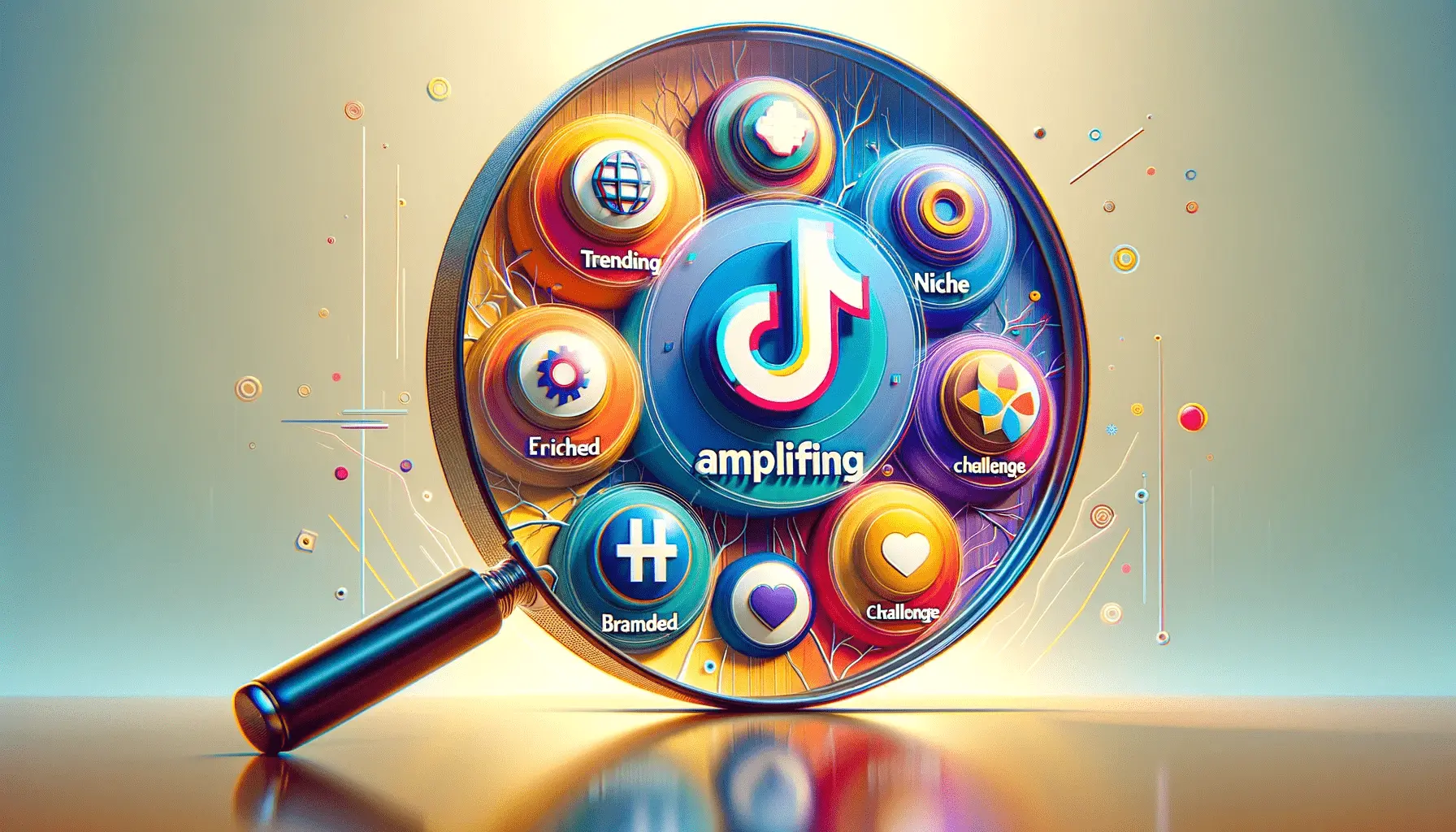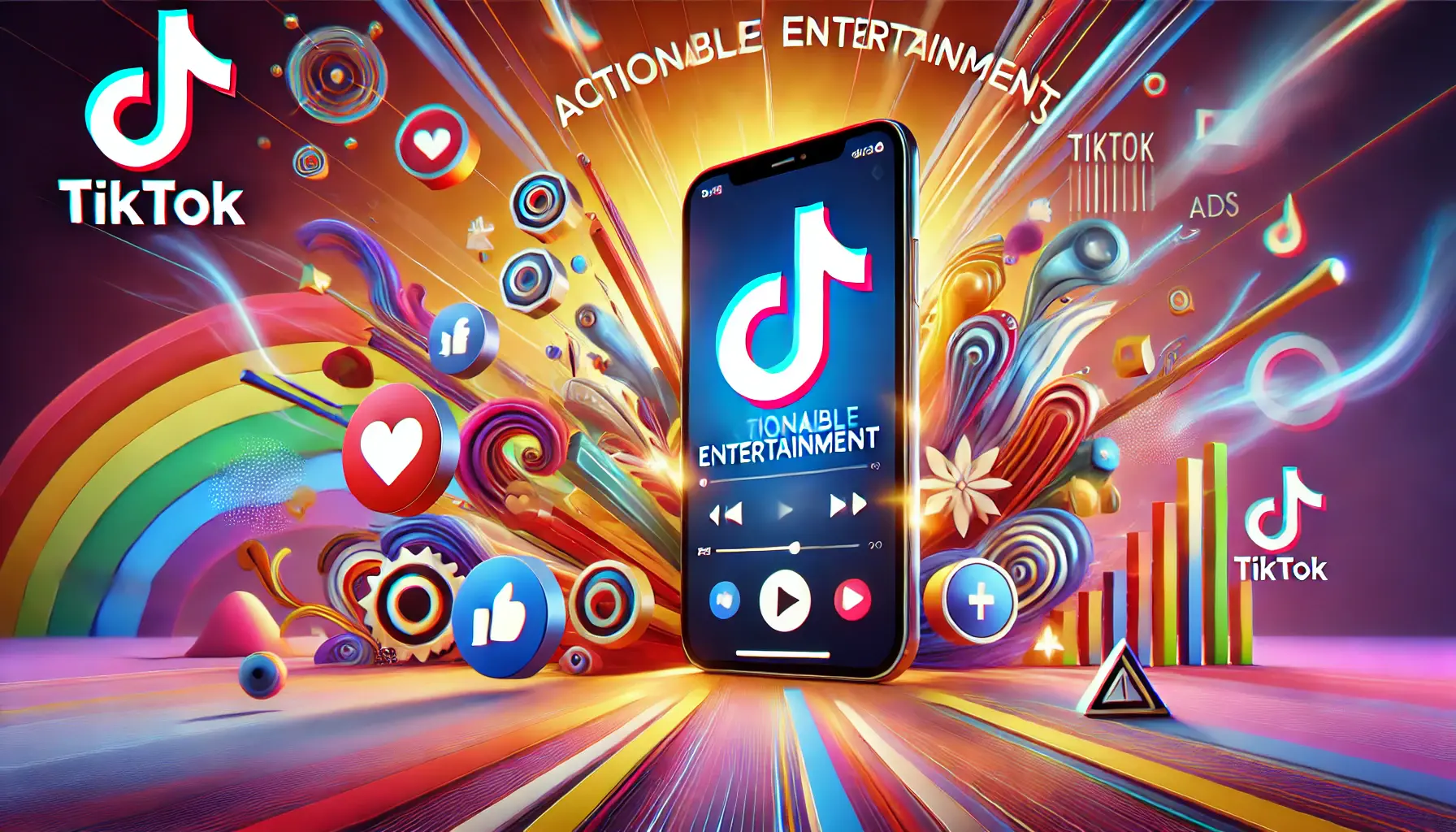As the digital landscape evolves, TikTok has emerged as a pivotal platform for brands to engage with a diverse and dynamic audience.
Understanding the nuances of campaign analysis on TikTok is crucial for marketers aiming to optimize their presence and impact on this rapidly growing platform.
In this comprehensive exploration, we delve into three distinct types of campaign analysis on TikTok, each offering unique insights and strategies for success.
With TikTok’s unique algorithm and user behavior, traditional approaches to campaign analysis may not always yield the desired results.
Hence, it’s imperative to adapt and adopt methodologies that resonate with TikTok’s distinctive environment.
This article aims to guide marketers through the intricacies of TikTok campaign analysis, ensuring they harness the full potential of their marketing efforts on this vibrant platform.
- TikTok’s Algorithm and User Engagement
- TikTok’s Analytics Tools for Campaign Analysis
- TikTok Campaign Types: Hashtag Challenges, Branded Effects, and In-Feed Ads
- Key Metrics for TikTok Campaign Analysis
- Optimizing TikTok Campaigns: Strategies for Enhanced Performance
- Case Studies: Successful TikTok Campaigns
- Future Trends in TikTok Campaign Analysis
- Conclusion: Mastering Campaign Analysis on TikTok
- Frequently Asked Questions About TikTok Campaign Analysis
TikTok’s Algorithm and User Engagement
At the heart of TikTok’s appeal lies its sophisticated algorithm, which plays a pivotal role in determining the visibility and success of marketing campaigns.
Unlike other social platforms, TikTok’s algorithm prioritizes user engagement and content relevance over follower count, making it essential for brands to create content that resonates with their target audience.
Understanding this algorithm is the first step in crafting campaigns that not only reach a wider audience but also engage them effectively.
For marketers, this means diving deep into the types of content that perform well on TikTok, analyzing trends, and understanding the preferences of their target demographic.
By aligning campaign content with these insights, brands can significantly increase their chances of appearing on users’ “For You” pages, thereby amplifying their reach and engagement.
Measuring User Engagement and Interaction
User engagement on TikTok goes beyond mere views and likes.
It encompasses a range of interactions, including shares, comments, and the creation of user-generated content in response to a campaign.
Analyzing these engagement metrics provides a comprehensive understanding of how users are interacting with your content and what drives them to engage.
This analysis is crucial for refining campaign strategies and ensuring that future content aligns more closely with user preferences and behaviors.
Engagement metrics also offer insights into the virality potential of your content.
High levels of user interaction, especially in the form of shares and user-generated content, can propel a campaign to viral status, exponentially increasing its reach and impact.
By focusing on these metrics, brands can gauge the effectiveness of their content and make data-driven decisions to enhance their TikTok marketing strategies.
Key Point: TikTok’s algorithm and user engagement are fundamental to campaign success. Understanding and leveraging these elements can significantly enhance the visibility and impact of your marketing efforts on the platform.
TikTok’s Analytics Tools for Campaign Analysis
TikTok offers a suite of analytics tools designed to provide marketers with in-depth insights into their campaign performance.
These tools are instrumental in dissecting various aspects of a campaign, from reach and engagement to audience demographics.
By effectively utilizing TikTok’s analytics, brands can fine-tune their strategies for maximum impact.
- Overview of TikTok’s Built-In Analytics: TikTok’s native analytics platform offers a comprehensive view of campaign performance metrics. This includes data on video views, profile visits, follower growth, and engagement rates. These metrics are crucial for understanding the overall performance of a campaign and identifying areas for improvement.
- Advanced Metrics for Deeper Insights: Beyond basic analytics, TikTok provides advanced metrics such as video completion rates, average watch time, and the virality of content. These metrics offer deeper insights into user behavior and content effectiveness, enabling brands to craft more engaging and impactful campaigns.
- Custom Reporting for Tailored Analysis: TikTok allows marketers to create custom reports, focusing on specific aspects of their campaigns. This feature is particularly useful for brands looking to analyze particular elements of their campaigns, such as the effectiveness of different content types or the performance of campaigns across various demographic segments.
Utilizing Third-Party Analytics Tools for Enhanced Analysis
While TikTok’s native analytics provide a wealth of information, third-party tools can offer additional layers of analysis.
These tools often provide more detailed insights, such as sentiment analysis, competitor benchmarking, and more granular demographic data.
By integrating these tools into their TikTok campaign analysis, brands can gain a more holistic view of their performance and the competitive landscape.
- Comprehensive Data Aggregation: Third-party tools often aggregate data from multiple sources, providing a more comprehensive view of campaign performance.
- Benchmarking Against Competitors: These tools can offer benchmarking features, allowing brands to compare their performance against competitors and industry standards.
- Advanced Sentiment Analysis: Some tools offer sentiment analysis, which can be invaluable in understanding the emotional response of users to campaign content.
Idea: Combining TikTok’s native analytics with third-party tools can provide a more nuanced and comprehensive understanding of campaign performance, enabling brands to make more informed strategic decisions.
TikTok Campaign Types: Hashtag Challenges, Branded Effects, and In-Feed Ads
TikTok’s diverse campaign formats offer unique opportunities for brands to engage with audiences.
Among these, Hashtag Challenges, Branded Effects, and In-Feed Ads stand out for their effectiveness and popularity.
Each format serves a different purpose and requires a distinct approach to analysis and optimization.
Hashtag Challenges: Virality and Community Engagement
Hashtag Challenges are a cornerstone of TikTok’s interactive experience.
They encourage user participation, often leading to viral content.
Analyzing the success of a Hashtag Challenge involves looking at the number of user-generated videos, the reach of the hashtag, and the level of engagement each video receives.
This analysis helps brands understand the challenge’s impact on brand awareness and audience engagement.
- Tracking Participation: The number of videos created using the challenge hashtag is a direct indicator of its popularity and reach.
- Engagement Metrics: Likes, comments, and shares on challenge videos provide insights into how the audience is interacting with the content.
- Audience Growth: An increase in followers during the challenge period can indicate the campaign’s effectiveness in attracting new audience members.
Branded Effects: Immersive Brand Experiences
Branded Effects allow brands to create custom filters and effects that users can apply in their videos.
The success of Branded Effects is measured by the number of times the effect is used and the engagement on videos using the effect.
This format is particularly effective for enhancing brand recognition and creating immersive experiences.
- Effect Usage: The frequency of the effect’s use across TikTok videos reflects its popularity and audience appeal.
- Engagement on Effect Videos: Analyzing likes, comments, and shares on videos using the branded effect provides insights into its impact.
In-Feed Ads: Direct Reach and Conversion
In-Feed Ads appear on users’ “For You” pages, offering a more traditional advertising approach.
Key metrics for these ads include click-through rates, conversion rates, and overall impressions.
This format is ideal for driving direct actions such as website visits or product purchases.
- Click-Through Rates (CTR): CTR indicates how effectively the ad prompts users to take action.
- Conversion Rates: This metric shows the percentage of users who take a desired action after clicking the ad.
- Impressions and Reach: These metrics provide insights into how widely the ad is being seen across the platform.
Truth: Understanding the unique dynamics of each campaign type on TikTok is essential for tailoring analysis and optimizing performance. Each format offers different pathways to engage with the TikTok community and achieve marketing objectives.
Key Metrics for TikTok Campaign Analysis
Effective TikTok campaign analysis hinges on understanding and tracking key performance metrics.
These metrics provide valuable insights into the effectiveness of a campaign, guiding brands in optimizing their strategies for better engagement and conversion.
Here, we explore the essential metrics that should be at the forefront of any TikTok campaign analysis.
Engagement Metrics: Understanding Audience Interaction
Engagement metrics such as likes, comments, shares, and video completion rates are critical in assessing how audiences interact with campaign content.
High engagement rates often indicate content that resonates well with the audience, leading to increased brand visibility and user involvement.
- Likes and Comments: These metrics reflect the audience’s direct response to the content, indicating its appeal and relevance.
- Shares: The number of shares highlights the content’s virality potential, showing how likely users are to recommend it to others.
- Video Completion Rates: This metric reveals how captivating the content is, with higher completion rates indicating more engaging videos.
Reach and Impressions: Gauging Campaign Scope
Reach and impressions measure the extent of content visibility on the platform.
While reach indicates the number of unique users who have seen the content, impressions count the total number of times the content has been viewed.
These metrics are vital for understanding the campaign’s overall exposure and visibility on TikTok.
- Total Reach: This metric helps brands understand the breadth of their campaign’s audience.
- Impressions: A high number of impressions suggests that the content is being viewed multiple times, indicating its popularity and relevance.
Conversion Metrics: Tracking Desired Actions
Conversion metrics such as click-through rates (CTR) and conversion rates are crucial for campaigns aimed at driving specific user actions, like visiting a website or making a purchase.
These metrics help assess the effectiveness of the campaign in achieving its marketing objectives.
- Click-Through Rates (CTR): CTR measures the effectiveness of content in encouraging users to click on a link or call to action.
- Conversion Rates: This metric assesses the percentage of users who take the desired action after interacting with the campaign content.
Note: While these metrics are fundamental to campaign analysis, it’s important to consider them in the context of specific campaign goals and target audiences. Tailoring the analysis to align with these factors ensures more accurate and actionable insights.
Optimizing TikTok Campaigns: Strategies for Enhanced Performance
Optimizing TikTok campaigns is a dynamic process that involves continuous analysis and adjustment.
By understanding the nuances of the platform and employing strategic modifications, brands can significantly enhance their campaign performance.
Here, we explore effective strategies for optimizing TikTok campaigns.
Content Adaptation and Creative Experimentation
Adapting content to align with TikTok’s unique style and user preferences is key to campaign success.
Brands should focus on creating authentic, creative, and engaging content that resonates with the TikTok audience.
Experimenting with different content formats, styles, and storytelling techniques can help identify what works best on the platform.
- Embracing TikTok’s Creative Culture: Incorporating popular trends, music, and challenges into campaign content can increase its appeal and engagement.
- Testing Various Content Types: Experimenting with different video formats, lengths, and narratives can help determine the most effective approach for engaging the audience.
Targeting and Audience Segmentation
Effective targeting and audience segmentation are crucial for reaching the right users on TikTok.
By analyzing audience demographics and behaviors, brands can tailor their campaigns to specific segments, increasing relevance and engagement.
- Demographic Targeting: Tailoring content to specific age groups, locations, and interests ensures that it reaches the most relevant audience.
- Behavioral Analysis: Understanding user behaviors and preferences enables brands to create content that aligns with audience interests and trends.
Utilizing TikTok’s Ad Features and Tools
Leveraging TikTok’s advertising features and tools can significantly enhance campaign performance.
Features like Branded Hashtag Challenges and In-Feed Ads offer unique ways to engage users, while TikTok’s analytics tools provide insights for optimization.
- Exploring Ad Formats: Utilizing different ad formats like Branded Effects and Hashtag Challenges can increase user interaction and campaign reach.
- Analytics for Performance Insights: Regularly reviewing campaign analytics helps in identifying areas for improvement and making data-driven decisions.
Featured Info: Continuous optimization, driven by creative adaptation, targeted audience segmentation, and strategic use of TikTok’s features, is essential for maximizing campaign performance and achieving marketing objectives on the platform.
Case Studies: Successful TikTok Campaigns
Examining successful TikTok campaigns provides valuable insights into effective strategies and best practices.
These case studies highlight how brands have leveraged TikTok’s unique features to create impactful and engaging campaigns, offering lessons for others looking to achieve similar success on the platform.
Brand Engagement Through Hashtag Challenges
One notable example is a global fashion brand that launched a Hashtag Challenge to promote a new product line.
The challenge encouraged users to create videos showcasing their personal style using the brand’s products, accompanied by a custom hashtag.
The campaign resulted in millions of user-generated videos, significantly boosting brand awareness and engagement.
- Key Success Factors: Creative concept, effective use of a custom hashtag, and alignment with TikTok’s user-generated content culture.
- Impact: Increased brand visibility, user engagement, and a surge in user-generated content related to the brand.
Innovative Use of Branded Effects
Another successful campaign involved a technology company that created interactive Branded Effects to promote a new product.
The effects allowed users to virtually interact with the product, leading to a high level of engagement and shareability.
This innovative approach helped the brand stand out and effectively engage the TikTok community.
- Key Success Factors: Innovative use of Branded Effects, interactive content, and a strong call to action.
- Impact: Enhanced user engagement, increased product awareness, and a boost in social sharing.
Targeted In-Feed Ads for Direct Conversion
A leading e-commerce brand utilized TikTok’s In-Feed Ads to drive traffic to their website and increase sales.
By targeting specific demographics and leveraging compelling visuals and calls to action, the brand achieved a high click-through rate and significant conversion growth.
- Key Success Factors: Precise targeting, compelling ad creatives, and clear calls to action.
- Impact: High click-through rates, increased website traffic, and a significant boost in conversions.
Idea: These case studies demonstrate the power of TikTok’s diverse campaign formats and the importance of creativity, targeting, and user engagement in driving campaign success.
Future Trends in TikTok Campaign Analysis
The landscape of TikTok campaign analysis is continually evolving, with emerging trends shaping the future of marketing on the platform.
Staying ahead of these trends is crucial for brands looking to maintain a competitive edge and effectively engage with the TikTok audience.
Here, we explore the future directions in TikTok campaign analysis that are set to redefine marketing strategies on the platform.
Integration of AI and Machine Learning
Artificial Intelligence (AI) and Machine Learning (ML) are increasingly being integrated into TikTok’s analytics tools, offering more sophisticated insights into user behavior and content performance.
This integration allows for predictive analysis, helping brands anticipate trends and user responses, thereby enabling more proactive and targeted campaign strategies.
- Enhanced User Insights: AI-driven analytics provide deeper understanding of user preferences and behaviors.
- Predictive Content Performance: Machine learning algorithms can predict the potential success of content, guiding content creation and optimization.
Focus on User-Generated Content and Community Building
User-generated content (UGC) and community building are becoming central to TikTok’s marketing strategies.
Analyzing UGC trends and community engagement will be key in crafting campaigns that resonate with users and encourage active participation, fostering a sense of community around the brand.
- UGC Analysis: Tracking and analyzing UGC trends helps brands tap into the creative power of the TikTok community.
- Community Engagement Metrics: Metrics focused on community interaction and engagement will gain prominence in campaign analysis.
Advancements in Real-Time Analytics
Real-time analytics are set to play a more significant role in TikTok campaign analysis, offering instant feedback on campaign performance.
This immediacy allows brands to quickly adjust and optimize their campaigns, ensuring maximum relevance and impact.
- Instant Performance Insights: Real-time data provides immediate insights into campaign performance, enabling swift adjustments.
- Dynamic Campaign Optimization: The ability to quickly adapt campaigns based on real-time feedback ensures continued relevance and engagement.
Featured Info: The future of TikTok campaign analysis lies in the integration of advanced technologies like AI and ML, a growing focus on UGC and community engagement, and the development of real-time analytics, all of which will significantly enhance the effectiveness of marketing strategies on the platform.
Conclusion: Mastering Campaign Analysis on TikTok
In the dynamic world of digital marketing, TikTok has emerged as a game-changer, offering unique opportunities for brands to engage with a vast and diverse audience.
The key to unlocking the full potential of marketing efforts on this platform lies in mastering the art of campaign analysis.
By understanding and leveraging the various types of campaign analysis on TikTok, brands can not only enhance their visibility but also forge deeper connections with their audience.
The journey of campaign analysis on TikTok begins with a thorough understanding of the platform’s algorithm and user engagement patterns.
This foundational knowledge enables marketers to tailor their content and strategies to align with the preferences of the TikTok community.
The use of TikTok’s analytics tools, both native and third-party, provides invaluable insights into campaign performance, guiding brands in optimizing their content for maximum impact.
Embracing Future Trends in TikTok Marketing
Looking ahead, the landscape of TikTok campaign analysis is poised for significant evolution.
The integration of AI and machine learning will offer more nuanced insights, while a focus on user-generated content and community building will become central to successful marketing strategies.
Additionally, advancements in real-time analytics will enable brands to adapt their campaigns swiftly, ensuring they remain relevant and engaging in the ever-changing TikTok environment.
- AI and Machine Learning: These technologies will revolutionize how brands analyze user behavior and predict content performance.
- User-Generated Content: Focusing on UGC will help brands tap into the creative energy of the TikTok community, enhancing brand loyalty and engagement.
- Real-Time Analytics: The ability to respond quickly to campaign performance data will be crucial in maintaining campaign relevance and effectiveness.
In conclusion, campaign analysis on TikTok is an ongoing process that demands creativity, adaptability, and a deep understanding of the platform’s unique ecosystem.
By staying abreast of emerging trends and continually refining their strategies, brands can harness the power of TikTok to create impactful, engaging, and successful marketing campaigns.
As TikTok continues to grow and evolve, so too will the opportunities for innovative and effective campaign analysis.
Enjoyed the article? Let its author handle your social media ads. Visit our service page to get started!
Frequently Asked Questions About TikTok Campaign Analysis
Delving into TikTok campaign analysis raises several questions about best practices, strategies, and metrics. Here are some frequently asked questions to enhance your understanding of this dynamic process.
Success in TikTok campaigns is often measured by engagement rates, reach, impressions, click-through rates (CTR), and conversion rates. These metrics provide insights into audience interaction and campaign effectiveness.
Optimizing TikTok campaigns involves adapting content to TikTok’s style, targeting the right audience, and using TikTok’s ad features effectively. Regular analysis and adjustments based on performance data are key.
For successful Hashtag Challenges, create an engaging concept, use a unique and memorable hashtag, and encourage user participation. Analyze participation rates and engagement for effectiveness.
User engagement on TikTok can be tracked through likes, comments, shares, video completion rates, and user-generated content related to your campaign.
Yes, AI and machine learning can significantly enhance TikTok campaign analysis by providing predictive insights, sophisticated user behavior analysis, and content performance predictions.
Audience segmentation is crucial for delivering targeted content to specific groups, increasing relevance and engagement. It involves tailoring campaigns based on demographics and user interests.
Real-time analytics are vital in TikTok marketing for providing instant feedback on campaign performance, allowing for swift adjustments and ensuring content remains relevant and engaging.
Emerging trends include the integration of AI for deeper insights, a focus on user-generated content for community building, and advancements in real-time analytics for dynamic campaign optimization.










